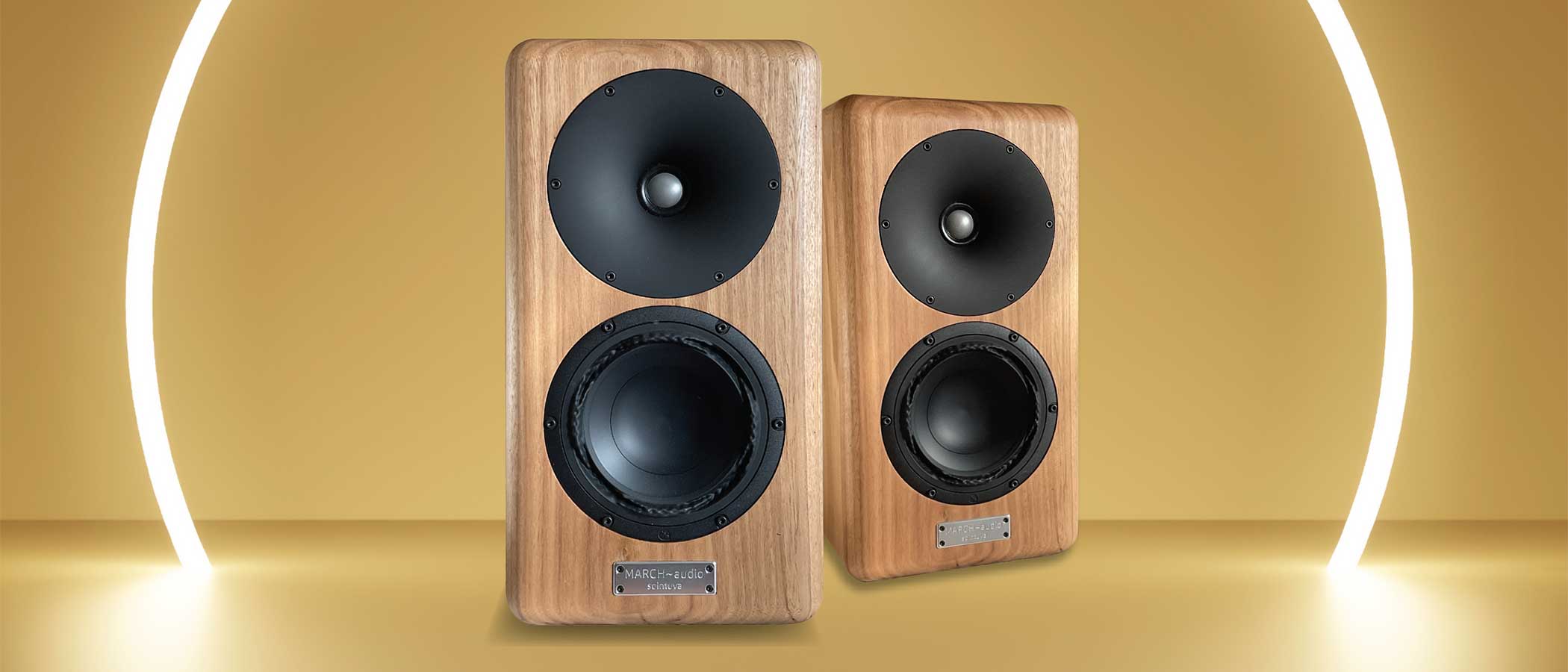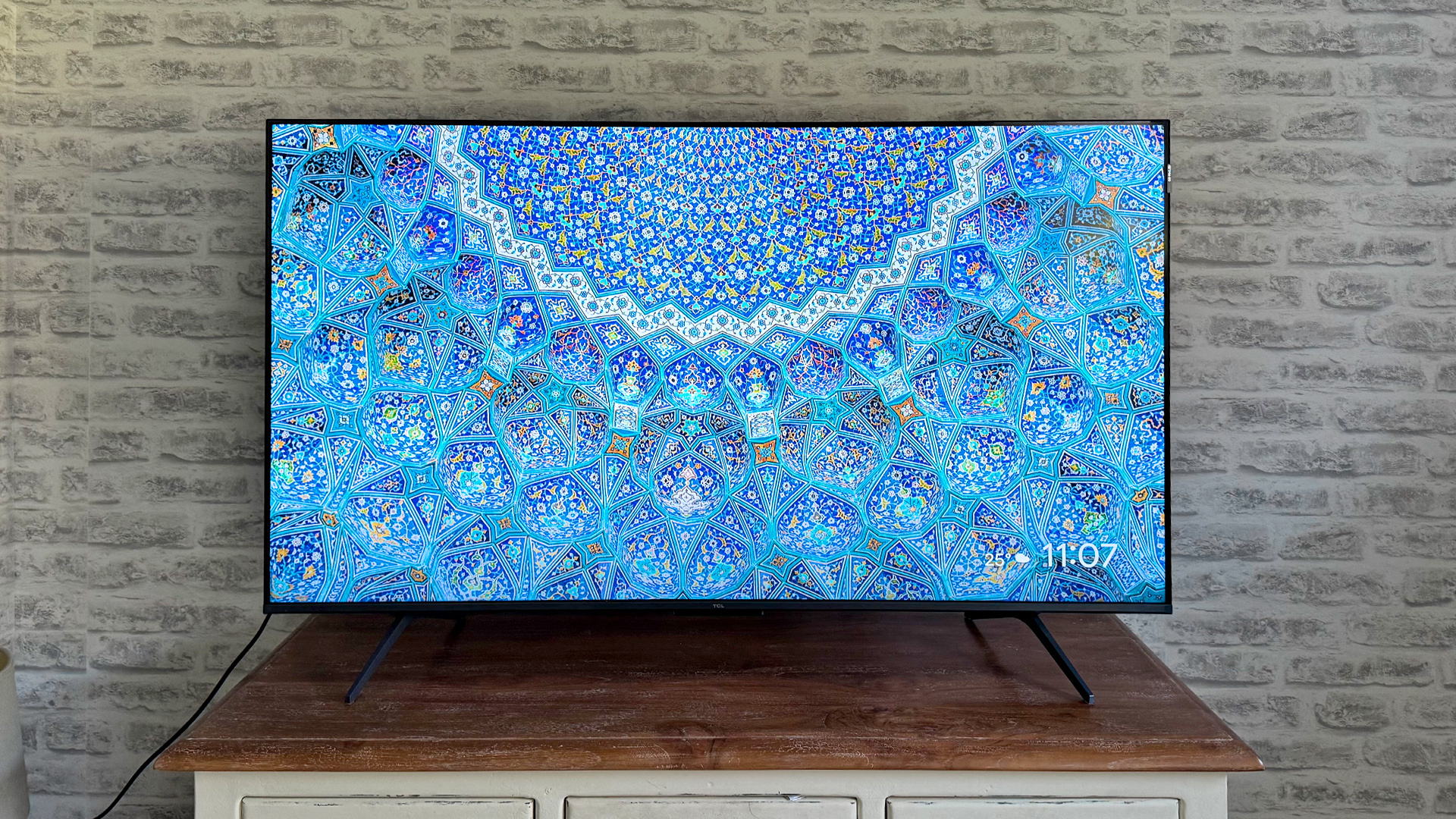Sound+Image Verdict
Quite simply the most enjoyable standmounts we’ve heard in yonks. Equally pleasing, they’re home-grown, in Perth, WA
Pros
- +
Huge sound from a standmount speaker
- +
Irresistible enthusiasm
- +
Gorgeous finishes
Cons
- -
Midrange occasionally affected by bass
Why you can trust What Hi-Fi?

This review originally appeared in Sound+Image magazine, one of What Hi-Fi?’s Australian sister publications. Click here for more information on Sound+Image, including digital editions and details on how you can subscribe.
We first encountered March Audio in 2020, when it had released a series of amplifiers from its headquarters in Perth, WA, and had just begun using power modules from Denmark’s Purifi (see ‘Meet wormy’ below). One of March Audio’s amps, the P452 stereo power amplifier (now called the P422), went on to win a Sound+Image Award.
But Purifi in Denmark also makes an unusual new design of loudspeaker driver. And when Alan March tried out this 6.5-inch Purifi driver, it proved to be just the thing he was seeking to achieve a speaker design he was developing.
“We had analysed all the usual suspects, but this Purifi driver was truly exceptional,” says Alan March. “It is the lowest-distortion longest-stroke driver of its size; indeed its performance exceeds that of far larger drivers. It also has extremely low compression, so sounds very dynamic; it doesn’t limit the volume of transients.”
March Audio’s design objective was to build a standmount speaker – though not one ‘bookshelf’-small in size – that has deep bass extension.
“Many available speakers in this class simply don’t go low enough, in my view,” says Alan March. “While people can always add a subwoofer to small speakers, this is in reality very problematic and difficult to implement properly.”
We’ve been looking forward to hearing the result, and now here they are, a pair of March Audio Sointuva WG loudspeakers in a beautiful real-wood finish.
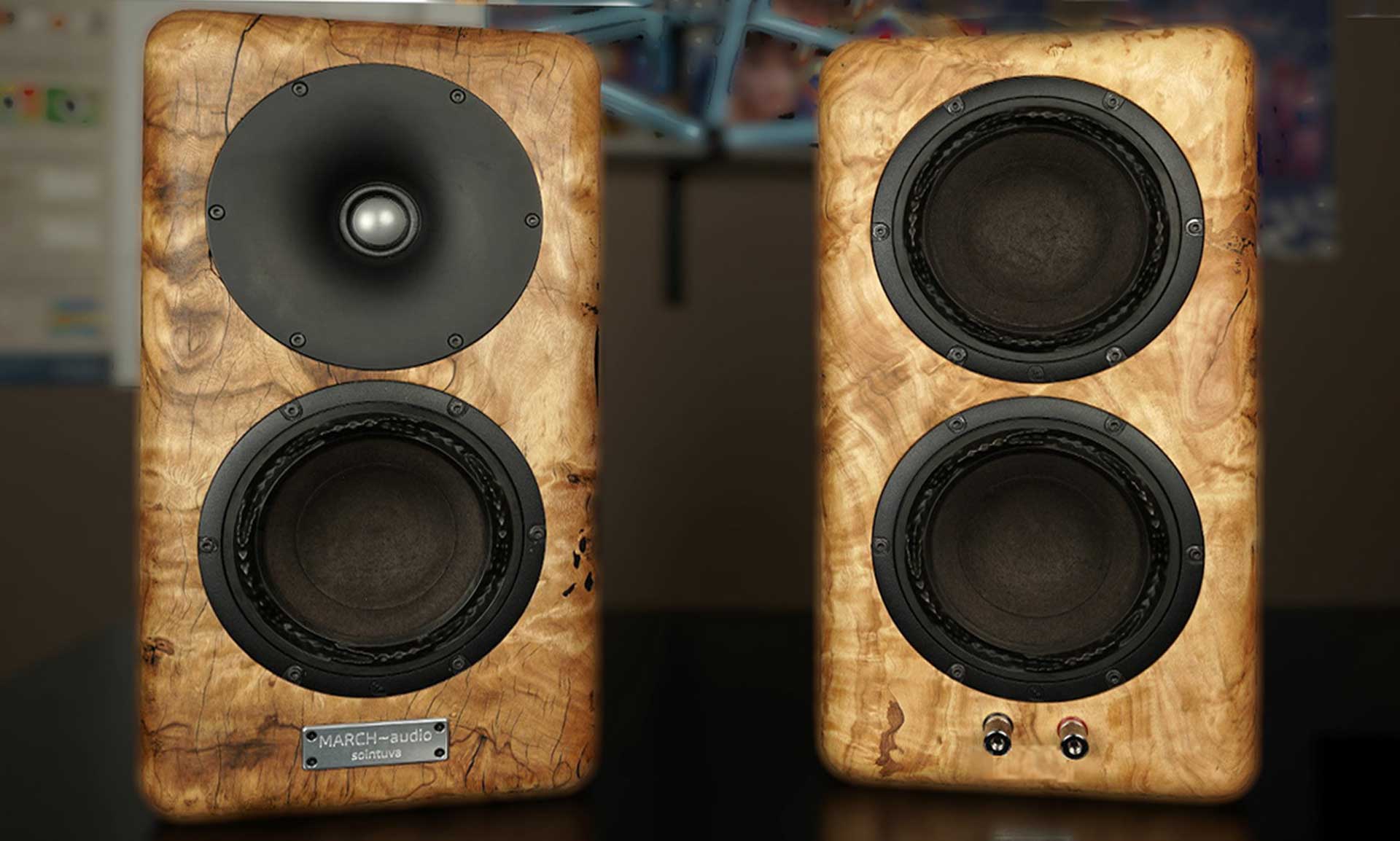
Build & facilities
The 6.5-inch driver is not the only Purifi driver in the Sointuva, but the others are hidden around the back: a pair of Purifi’s 6.5-inch passive radiators, performing the same job as a rear port in decompressing the internal air ‘spring’ within what is otherwise a sealed cabinet. The result, says March, is “tight and controlled bass similar to a closed design, but with the better low-frequency extension of a ported design. The passive radiators are an excellent compromise between the two designs, and don’t suffer port issues such as chuffing noises.”
The latest hi-fi, home cinema and tech news, reviews, buying advice and deals, direct to your inbox.
The speakers are certainly not bookshelf size; they are 44cm high, some 23.5cm wide and 21.5cm deep. With the two passive radiators all but filling the rear panel there’s only just room at the bottom for the pair of high-quality binding posts – these are ETI Research’s ‘Kryo’ design using silver-plated tellurium-copper alloy.
On the front, the Purifi driver’s surround is matched in size by the large waveguide for the tweeter, which is a ‘Satori’ model from SB Acoustics with a beryllium dome. The waveguide not only matches aesthetically but also ensures directivity for the tweeter matches the Purifi driver at the crossover point (“We very much follow the design rules outlined by Floyd Toole’s research”, says Alan March, pleasingly), while the crossover filter employs high-quality components including Jantzen capacitors and low-loss air-core inductors.
As for the finish, March Audio has some beautiful Australian solid-wood finishes using sustainably-sourced marri, jarrah, blackbutt, Tasmanian oak and more. Paint finishes are also in any colour from the RAL colour system – and currently all of these are impressively available at the standard price.
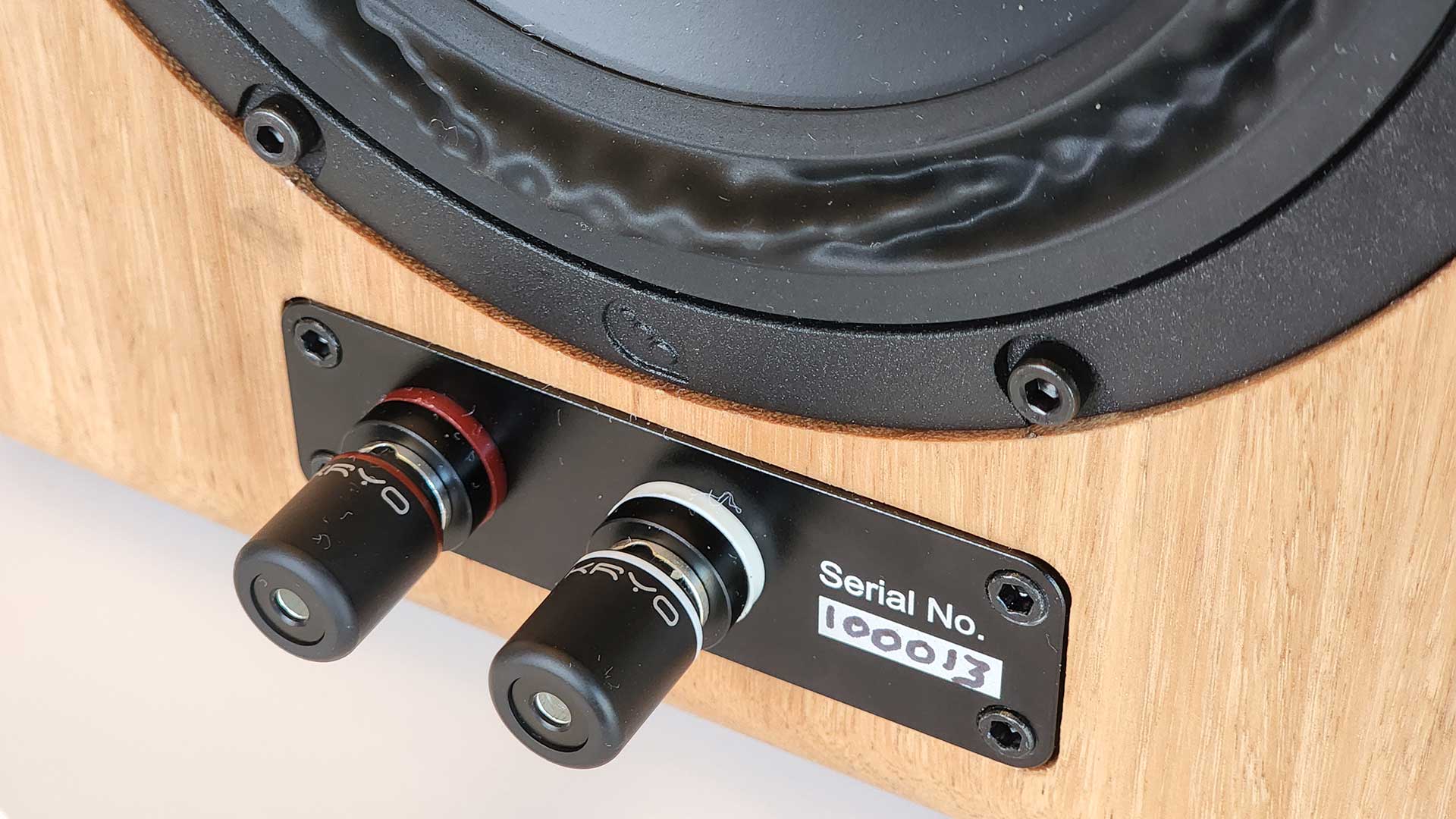
Performance
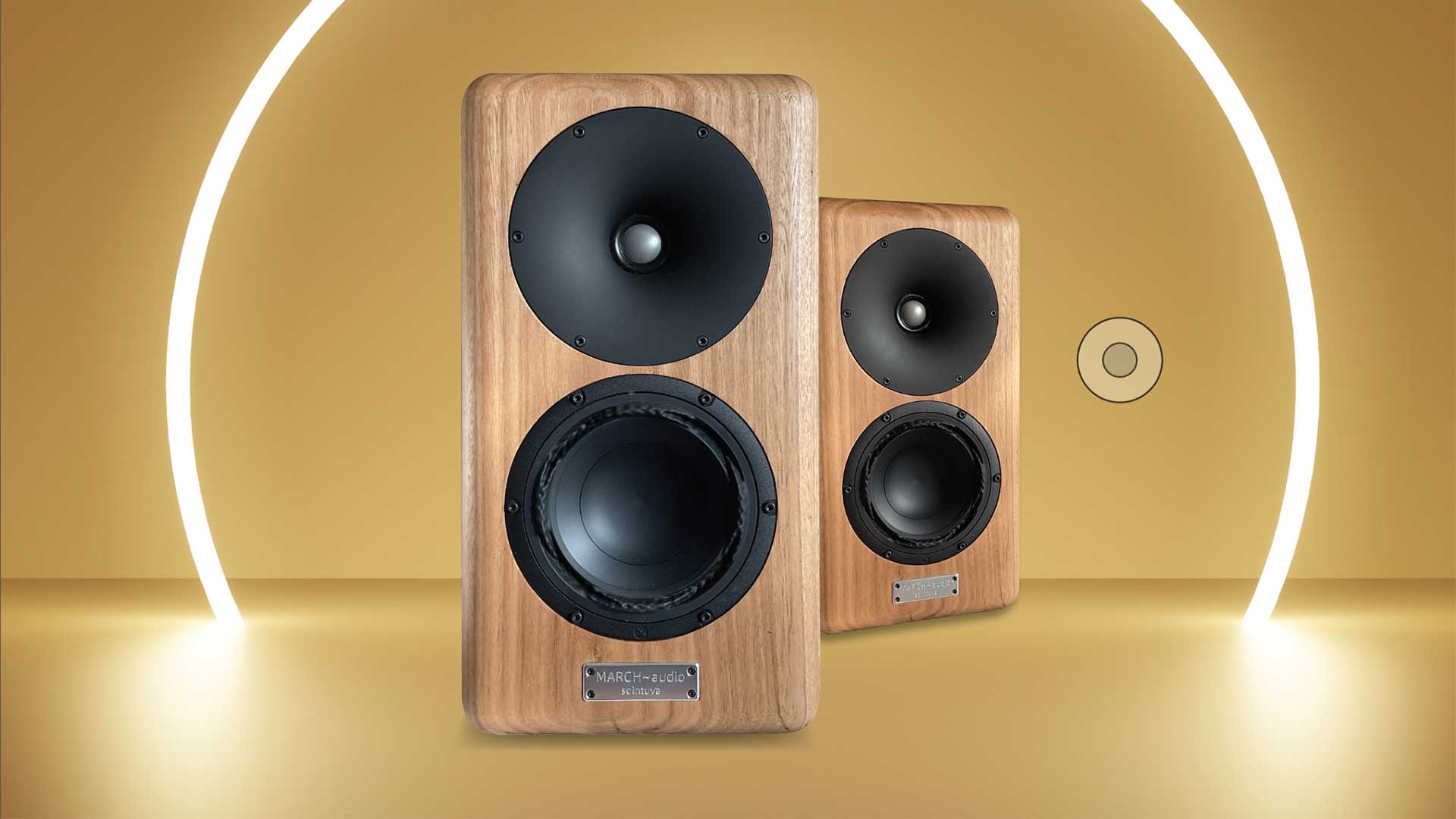
Drivers: 1 x 29mm SB Acoustics Satori TW29BNWG beryllium-dome tweeter, 1 x 165mm Purifi PTT6.5X04-NFA-01 mid/bass, 2 x 165mm Purifi PTT6.5PR-NF1-01 passive radiators
Quoted frequency response: 60Hz-18kHz ±1.5dB (43Hz at -3dB, 32Hz at -10dB)
Sensitivity: 83dB/2.83V/1m
Nominal impedance: 6 ohms (min. 3.3 ohms at 168Hz)
Dimensions: 440 x 237 x 220mm
Weight: 13kg
We listened in two different ways: with the Sointuvas on solid stands so that we could move them into the room, but also flanking our TV on a solid bench, which allowed us to bring their rear radiators a little closer to the rear wall. March Audio says there is no “ideal” distance from the rear wall, though Alan March uses his own some 40cm from the wall, saying the subjective result will depend upon the room construction, dimensions and final speaker position – and the individual’s taste for how much they want the bass re-inforced! We ended up primarily listening with them 30cm out, toed in, and given the bonus benefit of popping them on a pair of IsoAcoustics Aperta 200 stands.
In the TV-flanking position, they directly replaced a pair of German standmounts we’ve been using as our standard reference for years. Their RRP, way back when, was around $3500, and we regularly swap them out for visiting review speakers. Some visitors can’t match our references; some outperform them. But none has done so with quite the immediacy of the March Audio speakers. We could already feel the size and weight of their presentation while we were still angling down the IsoAcoustics stands and toeing the speakers in.
Although they are large standmounts, their curves and the very high wooden finish of our review pair meant they by no means presented intrusive tech in their TV-side position, and not much more so on their stands further out into the room. They were accepted and highly praised for their looks by others.
The Sointuvas arrived at a time when we were repeat-binge playing a new Alex The Astronaut single, Haircut, so we started our critical listening with that. It’s a track that can sound a tad congested on hi-fi unable to fully open its layers, but the Sointuvas were not of that ilk, absolutely ripping things up with a taut and powerful presentation. Her vocal held solid and true while the combo of the three 6.5-inch drivers and radiators delivered an underlying bass to the chorus that we hadn’t yet realised was even on the recording.
Solid bass, taut delivery – sounds like a recipe for listening to the Steve Wilson remixes of classic Yes albums. Here we discovered that the Sointuvas not only deliver a delicious balance, they continue to do so as you turn them up. The first gentle vocal section in Perpetual Change encouraged us to advance our amplification to better enjoy the silky Jon Anderson vocal and the soft but tight harmonies behind it, so that when the main dual piano-guitar riff returned with Chris Squire and Bill Bruford grinding away beneath, the effect was borderline brutal in its power. Yet it emerged from the Sointuvas entirely devoid of audible distortion.
How low is it going? March’s specifications put frequency response at 60Hz to 18kHz ±1.5dB, but that leaves plenty of slow roll-off in the octave below that, certainly into the 30s of hertz, as the speakers had no problem whatsoever reproducing the bass notes Neil Young is thrumming over Walk With Me on ‘Le Noise’, and that’s a slackened E string playing around 37Hz. All three bass notes underlining Björk’s Hyperballad? No problem here. A bass sweep had the speakers responding respectfully even below 30Hz – quite something for a standmount design.
Take this into some serious rock'n’roll, and the Sointuvas made us very happy indeed. The jangling guitars of Do You Realise? By The Flaming Lips were spread wide; the moving kick drum in Black Sabbath’s Iron Man didn’t phase the Sointuvas physically or metaphorically; and we don’t recall ever hearing such punch behind the opening stomps of Rory Gallagher’s live Bullfrog Blues coming from a pair of standmounters.
Just occasionally, as on this last track, we wondered if the effusive bass delivery was masking midrange clarity somewhat, whether by Doppler distortion (something which Purifi plays down) or sheer lower-frequency activity affecting the ability to fully open up a mix at the same time that you’re enjoying that prodigious low-end.
But the midrange itself is also worthy of praise when appearing under less frenetic circumstances. With the dynamic challenge of Chick Corea’s Australia jazz concerto, for example, every element was cleanly separated across the soundstage and rendered with its individual tone and dynamics.
Folk guitars were deliciously metallic as they jangled; listen to the weight of the right-channel drum and the contrasting lightness of Bruce Cockburn’s slack C-tuned steel-string guitar in the left channel on Soul Of A Man; rarely have we heard this song sounding so right and true. Or for pure vocal, crank up Clannad’s Macalla on the Sointuvas and try not to drown in the track’s endless reverb.
The top-end from that SB Acoustics tweeter is extremely refined. Occasionally we felt the very highest highs could be more open so that the strings of Mozart’s Symphony #25 (Marriner) were smooth rather than slicing, but we’d sooner that than be irritated by brightness. What's more, the Sointuvas conquered even our torture test in that regard, playing Dion’s I Read It (in the Rolling Stone) without the vocal sounding peaky, an almost unprecedented success.
Our caveat torture test to that track is Paul McCartney’s My Valentine, where the vocal is as soft as Dion’s is edgy, and here yes, Macca sounded rather rolled off and stodgy, though thankfully not as gratingly aged as he did at Glastonbury this year.
The softness of this vocal was a rare underachievement, however, with nearly all our testing tracks sounding either excellent or very very good under the handling of these powerful speakers.
And if you want to start a party, just play some dance through the Sointuvas: they nail beats big time, though their sensitivity is quite low at 83dB/W/m, so give them plenty of high-quality power when you do so. Having said that, they played as well from 50W Musical Fidelity power amps as from the heavier grunt of Classé amplification; we just needed the volume knob a little further advanced than usual, and indeed further still, as they so encourage high-level listening.
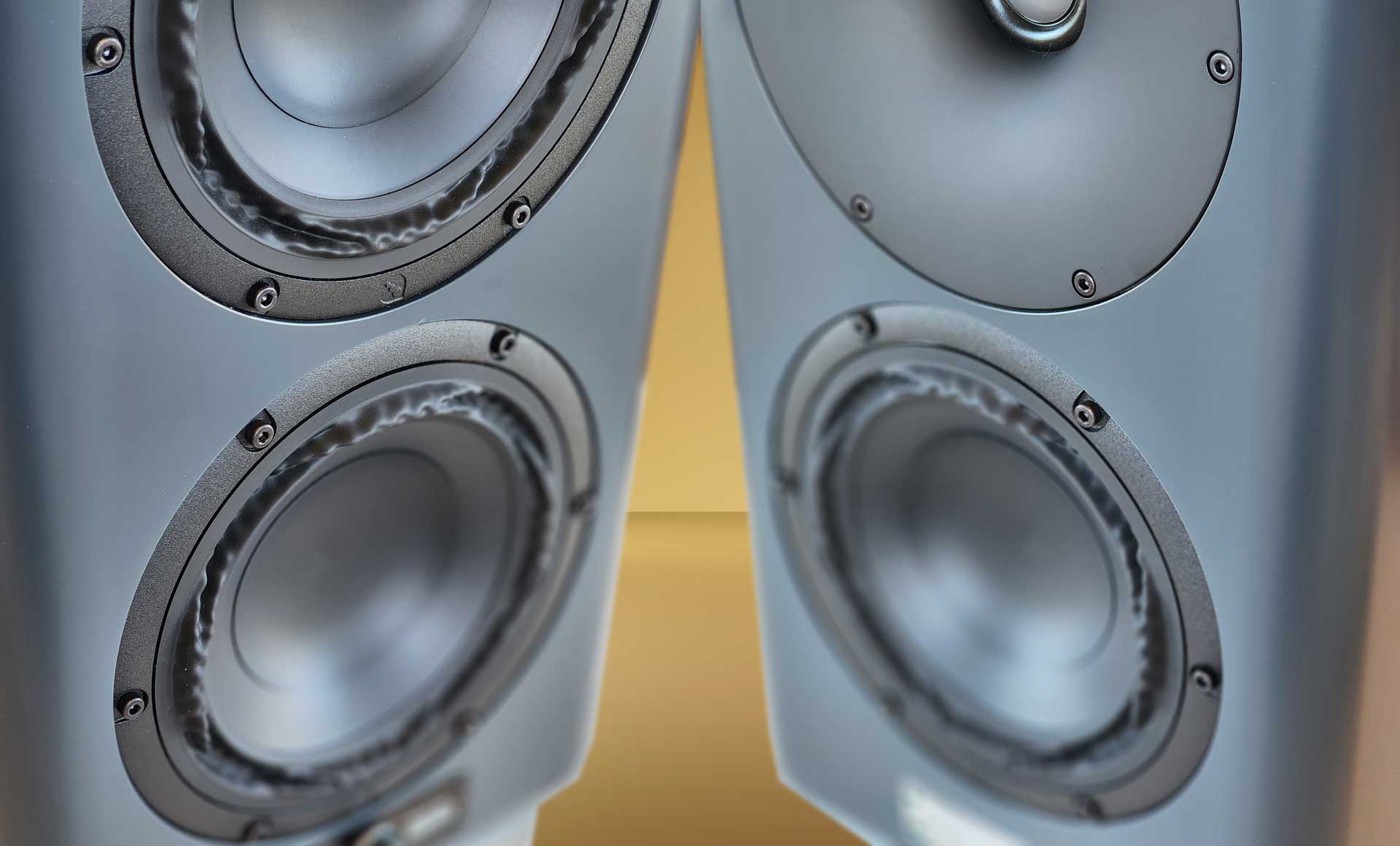
Meet 'Wormy' - more about Purifi
We first wrote about Denmark’s Purifi two years ago, highlighting their innovative amplification circuits. The three listed co-founders of Purifi Audio are Bruno Putzeys, Lars Risbo and Peter Lyngdorf – a pretty illustrious trio, with Putzeys the mind behind Hypex’s famous amp modules (including Ncore, the go-to Class-D module for many audiophile brands), while Risbo developed ‘equibit’ technology in his Danish company Toccata Technology, as used in the highly regarded TacT Millennium amp way back in 1999 before being bought into Texas Instruments. Peter Lyngdorf, of course, is behind half the hi-fi ever to come out of Denmark.
Our article about Purifi’s ‘Eigentakt’ power circuit asked “Is this the best Class-D amplifier ever?” It may be so; the technology was quickly taken up by NAD in its latest Masters amplifiers, by others too, and by March Audio for mono and stereo power amplifiers, the latter of which won a Sound+Image Award.
While the secret of Eigentakt amplification is the application of nonlinear control theory, with a “mathematically exact” optimisation of the feedback circuit that claims to improve performance by at least an order of magnitude over existing implementations, also crucial is Purifi’s obsession with hysteresis in magnetic elements, which they believe is an under-recognised form of distortion: “a recognisable grainy texture in the sound,” they call it, “a blanket of fuzz that always stays just this side of audible, taunting and infuriating like an itch you can’t scratch.” Clearly, this half-correlated noise has been getting under their skin, as you can read on Purifi’s blog pages.
Meanwhile in Purifi’s transducer division, the company’s 6.5-inch woofer, as used in the March Audio speaker, was designed to leverage the same reduction in magnetic hysteresis distortion. Purifi identified the problem of Force Factor Modulation, where the magnetic field created by current in the voice coil adds itself to the field created by the permanent magnet, so varying the magnetic flux in the air gap. And in long-stroke drivers a larger portion of the coil is in play, exacerbating the problem. As Purifi notes, FFM comes with a “side order” of magnetic hysteresis distortion. While iron-free drivers overcome this, they are an expensive option. Purifi’s new motor claims to be virtually free from FFM, while the new surround addresses the issue of the cone surface area changing as excursion increases.
“This Purifi ‘Neutral Surround’ – or ‘Wormy’ as we nicknamed it – is just one out of many fundamental improvements,” Purifi’s director Claus Neesgaard tells us from Denmark. “The special geometry combats surround radiation distortion [SRD] which is a fundamental flaw of standard ‘half-roll’ surrounds. The phenomenon behind SRD is easily conceptualised by pushing on the cone of a conventional half-roll-surround driver. When the cone is pushed inwards the effective radiating area of cone plus surround increases and, conversely, when pushed outwards, the area decreases.
"This position-dependent effective radiating area – we refer to it as Sd(x) modulation – is a direct contributor to distortion and IMD (intermodulation distortion) and thus is a must-fix problem if the goal is excellent sound quality. Our proprietary surround geometry keeps Sd(x) modulation at a minimum and practically eliminates SRD. We further optimised the geometry for a number of other benefits working collectively – it controls the critical cone/surround edge break-up for better frequency response, and improves resilience against back-pressure, especially useful in tiny cabinets.”
Since the release of the original 6.5-inch driver, Purifi has been rapidly expanding its offering with different sizes and variants.
“Our portfolio now covers 4-inch, 5.25-inch, 6.5-inch and 8-inch products and includes variants such as the higher-sensitivity M-version midrange units”, Neesgard tells us. “We also released variants with an ultra-thin PP coating on the cone for improved looks for OEM customers, and aluminium cones for even further reduced distortion.”
He tells us the portfolio is continuing to grow, with plans for a tweeter, and for even larger-sized woofers. For now, the ongoing release of the new 8-inch family is “turning a lot of heads. The distortion is so extremely low – not just in the lower frequencies but all the way to the upper mid-range.”
Purifi had a suite at the recent High End Munich and took along Alan March’s Australian products.
“Yes, we have heard them and enjoyed them quite a bit!,” enthuses Neesgaard. “So much in fact, that we played them alongside our own demo systems in our suite at Munich, including the March Audio amplifiers – they stay true to our vision of Pure Sound.”
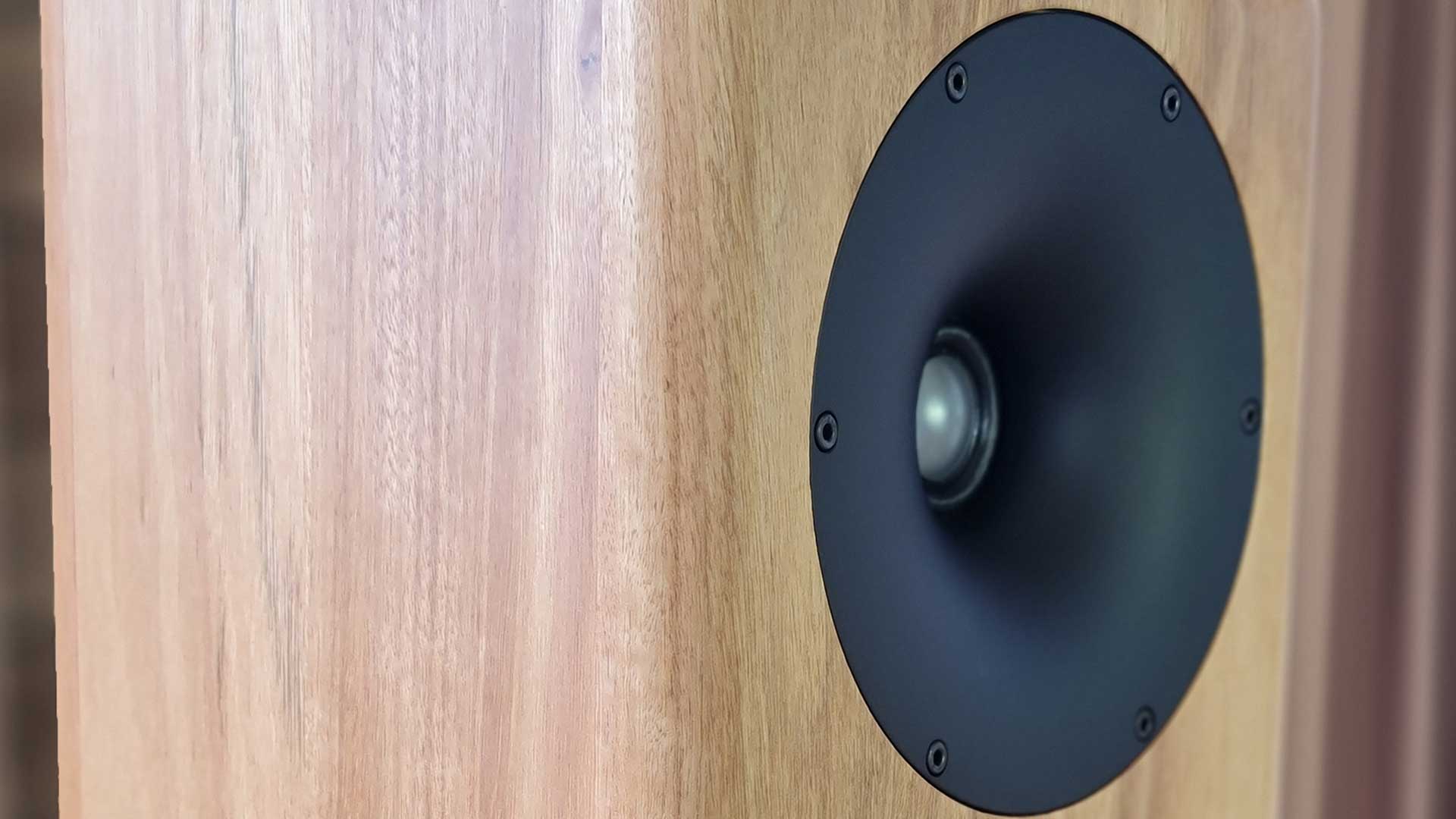
Verdict
There are a number of directions in which March Audio might take their speaker designs in the future. Purifi now has eight-inch drivers available, so March Audio could build bigger speakers. Or it could build smarter, adding Purifi amplification into the speaker for an active model. Either direction would excite us.
But for now, there’s more than enough excitement to be enjoyed from the Sointuva standmounts just as they are: a powerful and especially deep delivery that brings all manner of music to life.
One of the best recommendations we can give these speakers is this. We work with music playing nearly all the time, whether reviewing or not. But with the March Audio Sointuvas playing, we were constantly interrupted from our workflow by this or that track sounding just so damned good we had to stop and listen. We remember only two occasions in the past this happened so continuously – a large studio monitor design from JBL, and Audio Note’s AN-E. March Audio’s Sointuvas are more affordable, more room-friendly in both aesthetics and size, and infinitely more Australian than either of those. You really should hear them.
- Tickets on sale now! Join us at the Australian Hi-Fi Show 2023 in Sydney!

Jez is the Editor of Sound+Image magazine, having inhabited that role since 2006, more or less a lustrum after departing his UK homeland to adopt an additional nationality under the more favourable climes and skies of Australia. Prior to his desertion he was Editor of the UK's Stuff magazine, and before that Editor of What Hi-Fi? magazine, and before that of the erstwhile Audiophile magazine and of Electronics Today International. He makes music as well as enjoying it, is alarmingly wedded to the notion that Led Zeppelin remains the highest point of rock'n'roll yet attained, though remains willing to assess modern pretenders. He lives in a modest shack on Sydney's Northern Beaches with his Canadian wife Deanna, a rescue greyhound called Jewels, and an assortment of changing wildlife under care. If you're seeking his articles by clicking this profile, you'll see far more of them by switching to the Australian version of WHF.
